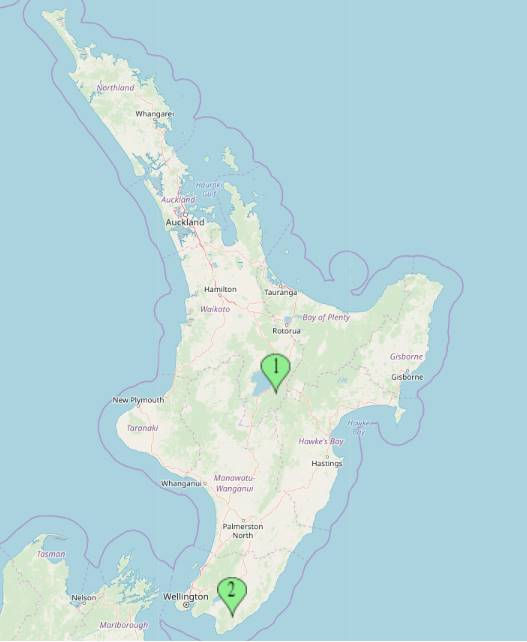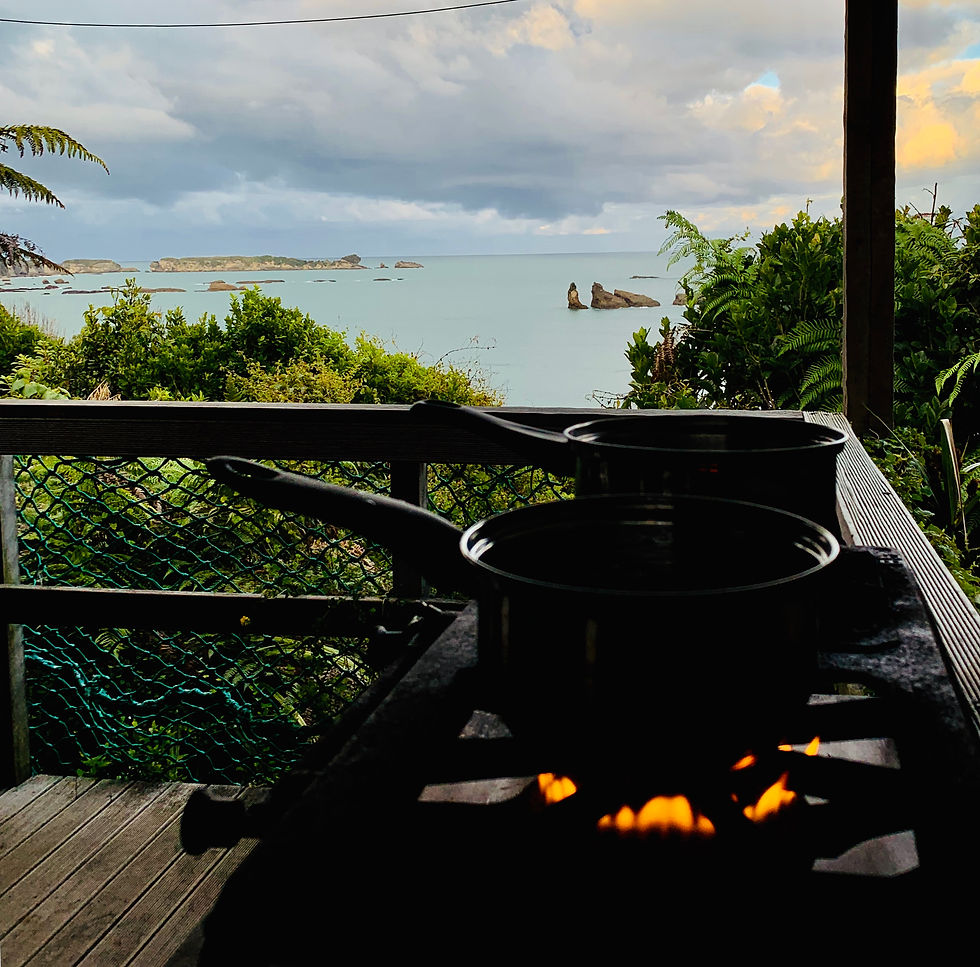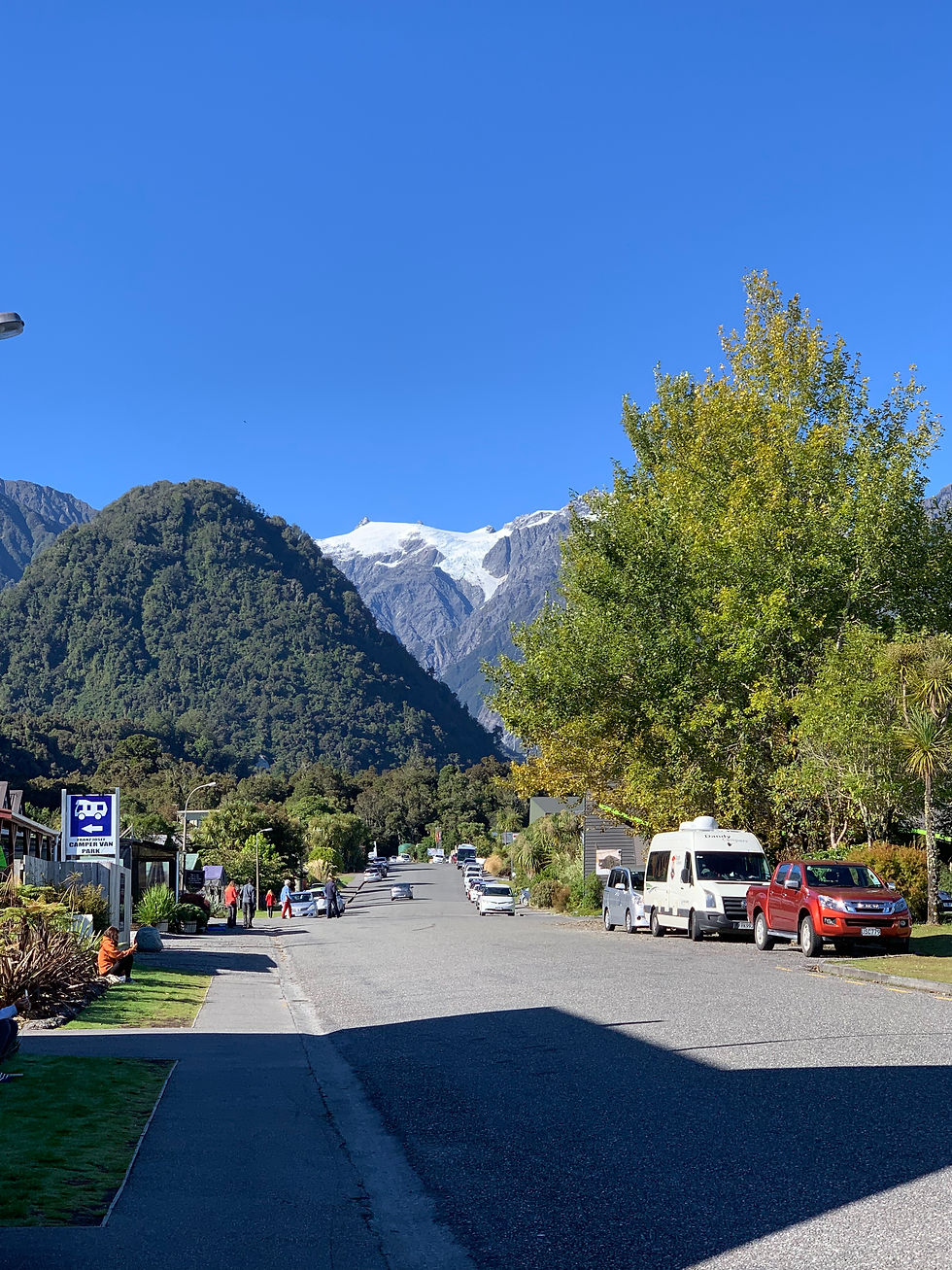Best travels often happen impromptu, and so did my husband and I randomly booked our flights to #Auckland in late 2018. Being avid travelers, we love visiting places during the offseason to avoid the crowd. We picked late February time frame which is typically the end of summer and beginning of spring, when most of the schools reopen in NZ (means less footfall).

I had always thought of #NewZealand as a country of landscapes. After marking my footprints to 35+ states in the US; I often pondered as to how different can it be; until I started planning and researching about the various natural wonders in NZ.
I have summarized a weekend worth of effort; 15+ hours of internet browsing, scribbling the paper maps and elevating our energy to plan an epic 15-day #roadtrip, majorly covering the south island of NZ.

How and what to plan?
Our 15-day itinerary was a good mix of #adventures and relaxing days. We covered 15 lakes, 9 national parks, 5 adventure sports, 5 short tracks (hikes), and 4 one-day tracks. Click on the following for things to do while visiting one of the areas.
2 days in North Island (Click the link below for each things to do in each area)
12 days in South Island
Day 8-9 : Undertake the adventures at Mount Cook & Queenstown -- Coming soon
Day 10-11-12 : Southland- Milford, Te Anau -- Coming soon
Know more before planning a trip to New Zealand:
Geography: The country of New Zealand comprises of many islands, the two largest being - North Island and South Island. The mode of transport between the two islands is via water or air.
Customs & Security: The country is very particular about the customs and declaration so avoid carrying any food, dairy, or fresh produce. There are 2 separate customs checkout lines (red and green) where one can get into the green one with no food and dairy for a much faster exit.
Rental Car: We planned to drive from North Island (#Auckland) to South Island (#Dunedin) and hence had reserved an Avis rental car for our road trip. We got to know while picking up the car that Avis (& other major rental agencies) did not allow rental vehicles to be carried on ferries. The same rental reservation automatically allowed us to drop our rental at North Island (#Wellington) prior to boarding the ferry and then pick up a new one at South Island (#Picton). Gladly, we did not reserve a car spot on the ferry so we saved a couple of hundred dollars!

Ferry: There are two sailing companies that operate ferries between the north and south islands: Interislander and Bluebridge. We got a good deal with Interislander at the Auckland airport terminal for 47 NZD pp. The ferry terminal at Wellington replicates an airport structure with check-in counters and gates. We reached 20 mins prior to boarding to drop our rental car at the terminal and check-in our luggage. The rental car drop off is just outside the terminal (3 min walk to the check-in center).
Rules of the Road:
You don't need a NZ driving license If you have a valid driving license from the US or India printed in English.
Driving is on the left (like UK and India).
Emergency number is 111.
Highways are well maintained and roads to most tracks are well paved so a compact car (2WD) is good.
There are very few gas stations that are open 24/7 in each town. Some gas stations do close as early as 8 pm so keep your tanks filled at all times.
The automatic card payment system at a gas station will require a pin # even for your credit card. Make sure you activate it before the trip. It is easiest to pay inside the gas station at the counter.
There are large number of sheep, deer, and cattle in the country and might be passing the road. Be careful at all times.
Did you pack the following for the NZ road trip?
Snack bites, nuts, fruits, 2-minute noodles (hit the grocery store e.g. countdown, freshchoice and pick up food and water for the trip. Unlike the United States, there are fewer cafes and food stalls on the way. Be prepared to carry extra food and drinks in the car!)
Water bottles (we carried a 2-L portable water bag for hikes and a 2-L bottle as a backup)
Portable chargers and universal converter
Car charger
Rubbish bags (there are not many trash cans on the way so we had to carry our trash)
Insect repellent (buy a local organic one from NZ esp. for sandflies)
Rain and windbreakers
Dirt removers (a small brush to clean your shoes after every hike. Most places are strict about not carrying dirt from other areas)
Couple hundred NZD (notes and coins)
Local phone card from the airport per your requirement
Travel like a Kiwi:
Kia Ora (Kee- Ora) means wishing hello!
Tipping at a restaurant or taxi is not mandatory.
We saw many hitchhikers during our road trip. Giving a lift to backpackers and hikers is courteous and also a great way to learn their experiences in the country!
Kiwis don't use the word hiking/hike, they call it ‘tramping/track'.
Do not miss the Feijoa smoothie (tangy fruit), a classic L&P (lemonade like soft drink), and honey/lavender ice cream while in NZ.
Kiwis love to talk. We indulged in conversations with the locals just to find out at the tail end of the trip I already started saying “Yeah, nah” (No thank you) and “wodder” (water) with a British accent.
Hostels are the way to go in NZ :
15-day trip can quickly get expensive if not well planned on accommodations, motels and Airbnb's. Considering the weather fluctuations in the country, it is important to stay at a location which is equidistant from more than one activity and excursion.
Travelers' preferred choice of stay is hostels and campgrounds. We did not find motels in the remotest locations where we found great hostels. Plus they are a third cheaper than motels (Note: There are no big chains of IHG, Hilton or SPG in this country barring a couple of big cities).
We opted for some hostels to divert our costs from luxury accommodations and rather pay for thrilling adventure sports. Given our first time staying at hostels and dorms; sharing rooms and experiences with backpackers was a great way to know how NZ has been a dream destination for many.
Check-in at most of the hostels and dorms is between 2-6 pm ONLY. This was unique as compared to other countries which do offer 24/7 check-ins. We ensured to call and inform our arrival time prior to every stay. Kiwis were very helpful in accommodating our late night check-ins by providing an alternative (leaving keys at the reception or someone made available to check us in).
We stayed at multiple towns to optimize the driving distance.
We were lucky with finding some hidden gems amongst the Airbnb’s and hostels with great views or accessibility to the activities. I will highly recommend staying at the following locations/towns for the best drive and experiences on the way.
Our accommodations:

North Island:
Lake Taupo Airbnb: Amazing lake facing property with a great host who guided us on a few tips and places to visit in the vicinity.
This is the closest (8 mins) drive to the Ferry terminal

South Island:
Abel Tasman Kaiteriteri Reserve Cabins: This is a beach facing lodge with cozy individual cabins for 2, with bunk beds, shared bathrooms and shared a kitchen.

Fox River Airbnb: Right in the middle of Nelson and Punakaiki areas, this location is ideal to avoid late night long drive from Nelson plus enjoy the scenic ocean drive in the morning. The Airbnb is located on a hill with captivating views of the beach. It had a unique outdoor kitchen and an open bathroom with complete privacy.

This was a dorm shared with 4 other backpackers right in the middle of the Franz Joseph village.

Haast Airbnb: Any airbnb in Haast will work out as this is a good pit stop for activities on the way to Lake Wanaka.
Wanaka, YHA hostel: YHA was well in the middle of the Wanaka town with access to groceries, restaurants and lake activities. 2-night stay at Wanaka is recommended for multiple activities and tracks in the surroundings.
Twizel, High Country Lodge and Backpackers: The town of Twizel is close to Lake Pukaki. Our private room with attached bathroom was well suited for accessing Aspiring National Park (Mount Cook tracks) and Lake Pukaki and Takepo activities.
Queenstown, Hilton Resorts and Spa: This was the most luxurious stay on the trip. Outdoor jacuzzi tub facing mountains and Lake Wakatipu with contemporary en-suite was a leisure. We spent a good chunk of Hilton points for this experience but one may find Great Lake facing Airbnb’s in Queenstown.

Te Anau Downs, Fiordland National Park Lodge: This lodge was one of the rare finds in the Te Anau down areas of the fiordlands. Most folks visiting Milford sounds either stay at Te Anau or Queenstown but Te Anau Downs is closer (1 hr 30 mins drive) to the Milford sounds cruise area and was best accessible especially for an early morning drive. We planned to stay for 2 nights here.

Car camping: Our last day before heading to Dunedin airport, we had no accommodation reservations. We parked 30 mins away from the Airport in a free parking spot and converted our car into a campervan.
~ Nomadic Traveler~








Comments